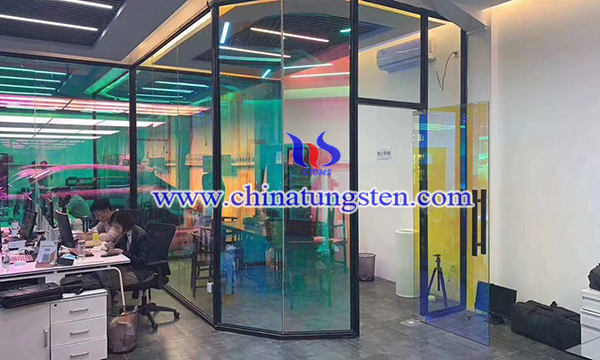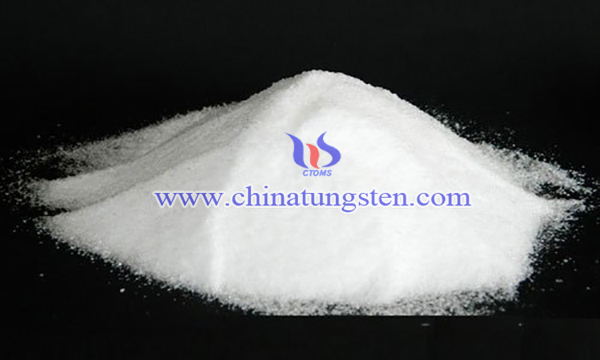Fabrication of Adhesive Electrochromic WO3 Thin Films
- Details
- Category: Tungsten Information
- Published on Monday, 18 October 2021 00:20
In the past few decades, electrochromic devices have received great attention from researchers in related fields in the materials industry. Tungsten trioxide (WO3) is one of the most common electrochromic films that, utilized as electrodes for smart window applications, aiming at reducing the energy consumption in buildings.
It is reported that adhesive electrochromic WO3 thin films has been prepared by adding polyvinyl alcohol (PVA) to WO3. The WO3 films exhibited an excellent transmittance change of 77 % at 633 nm and a coloration efficiency of 35 cm2/C. PVA is used as an additive to improve its adhesion and wettability. The preparation process of WO3/PVA films is as below:

WO3 NP (diameter: ~10 nm) is provided by Toshiba Materials Co. Ltd. We choose WO3 NP content of 25 wt.% of the total ink weight. The WO3 NPs were first dispersed in deionized water by stirring at 1000 rpm at room temperature (~20°C) for 48 hours. To prepare the ink for film manufacturing, WO3 NP suspension was mixed with varying amounts of PVA (0-10 wt.%) and then filtered through a 7 μm syringe filter.
A spin coater (ACT-300Aα, Active Inc.) was used to deposit WO3 NP film on an ITO/glass substrate (size: 25 cm2). In order to improve their wettability, the ITO/glass substrate is hydrophilized by plasma treatment before film deposition. Use a plasma cleaner (PDC-001, Harrick Plasma Inc.) to perform plasma treatment on the substrate for 3 minutes; for this purpose, RF glow discharge is used at a low pressure in the range of 1 × 10-3 Torr, and the applied power is 30 W. The contact angle of the WO3 ink dropped on the ITO/glass substrate was measured using a contact angle meter (DMs-400, Kyowa) after 50 seconds. In particular, since the wettability of the ink varies according to the PVA content, the speed (rpm) of the spin coating process is controlled to obtain a film thickness of ~1 μm.

In summary, adhesive electrochromic WO3 thin films were successfully prepared using different amounts of PVA and spin-coated on ITO/glass substrates. The highest optical modulation in the visible and NIR regions was observed in WO3-1 wt.% PVA film in K+ ion polymer electrolyte. Polyvinyl alcohol (PVA) was added to the WO3 NP ink to improve its adhesion to indium tin oxide-coated glass substrates. The contact angle of the inks on the substrate decreased with the addition of PVA, indicating their good wettability. Furthermore, the WO3 NP films exhibited an excellent transmittance change of 77 % at 633 nm and a coloration efficiency of 35 cm2/C. Their optical transmittance in the visible and near-infrared regions varied with the applied voltage, indicating their potential for applications in electrochromic devices and smart windows.
- Tungsten Oxide Manufacturer & Supplier, Chinatungsten Online: www.tungsten-oxide.com
- Tungsten News & Prices of China Tungsten Industry Association: www.ctia.com.cn
- Molybdenum News & Price: news.molybdenum.com.cn
- Tel.: 86 592 5129696; Fax: 86 592 5129797; Email: sales@chinatungsten.com



 sales@chinatungsten.com
sales@chinatungsten.com